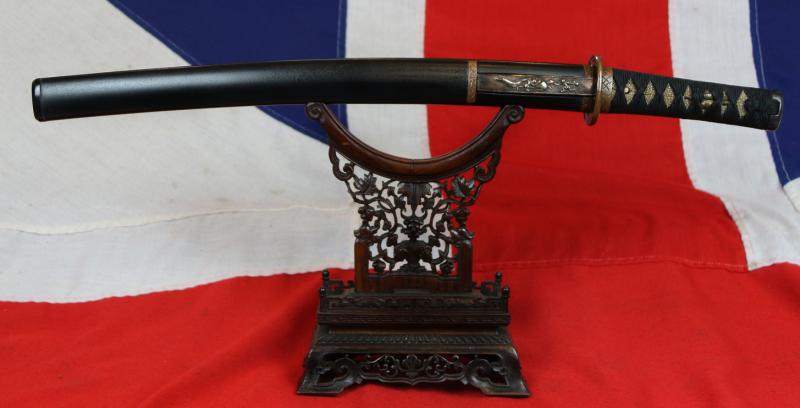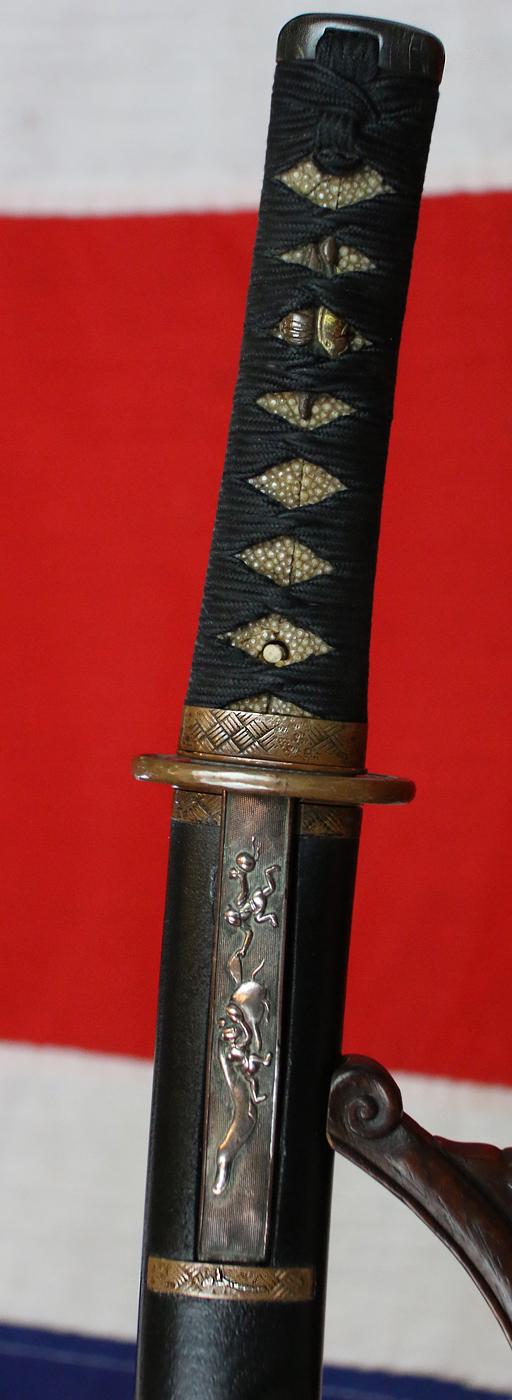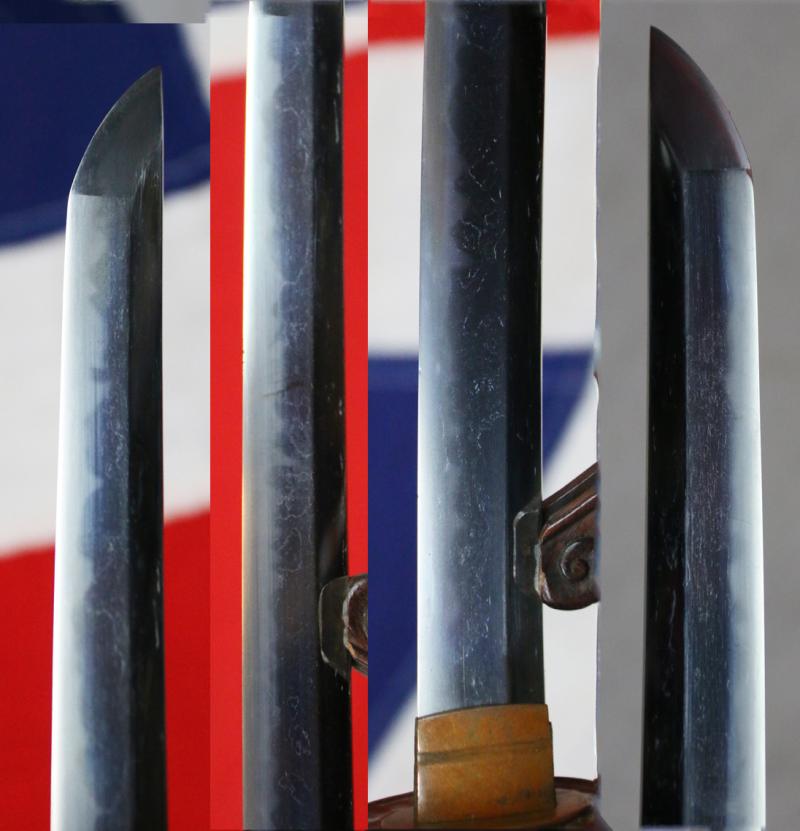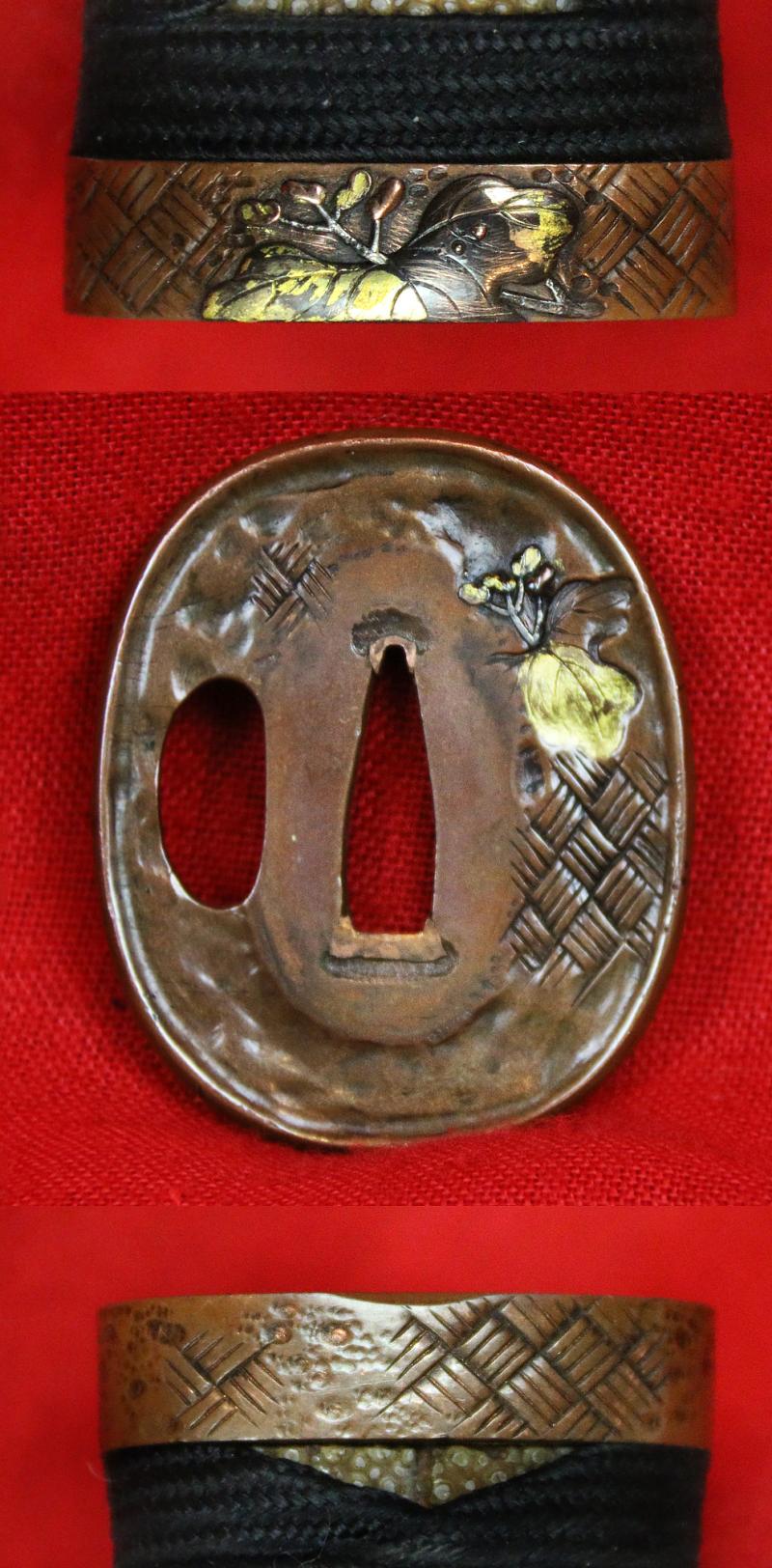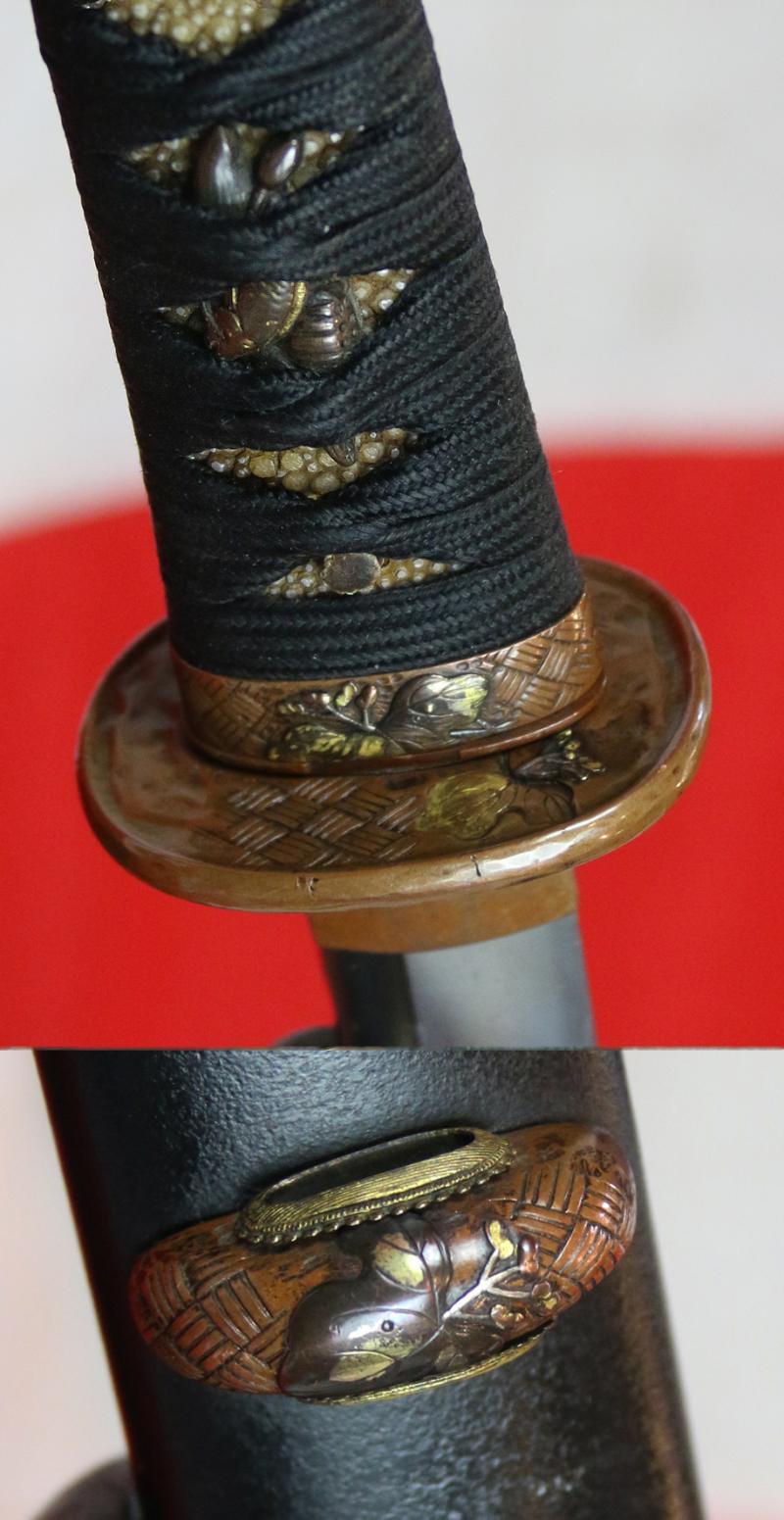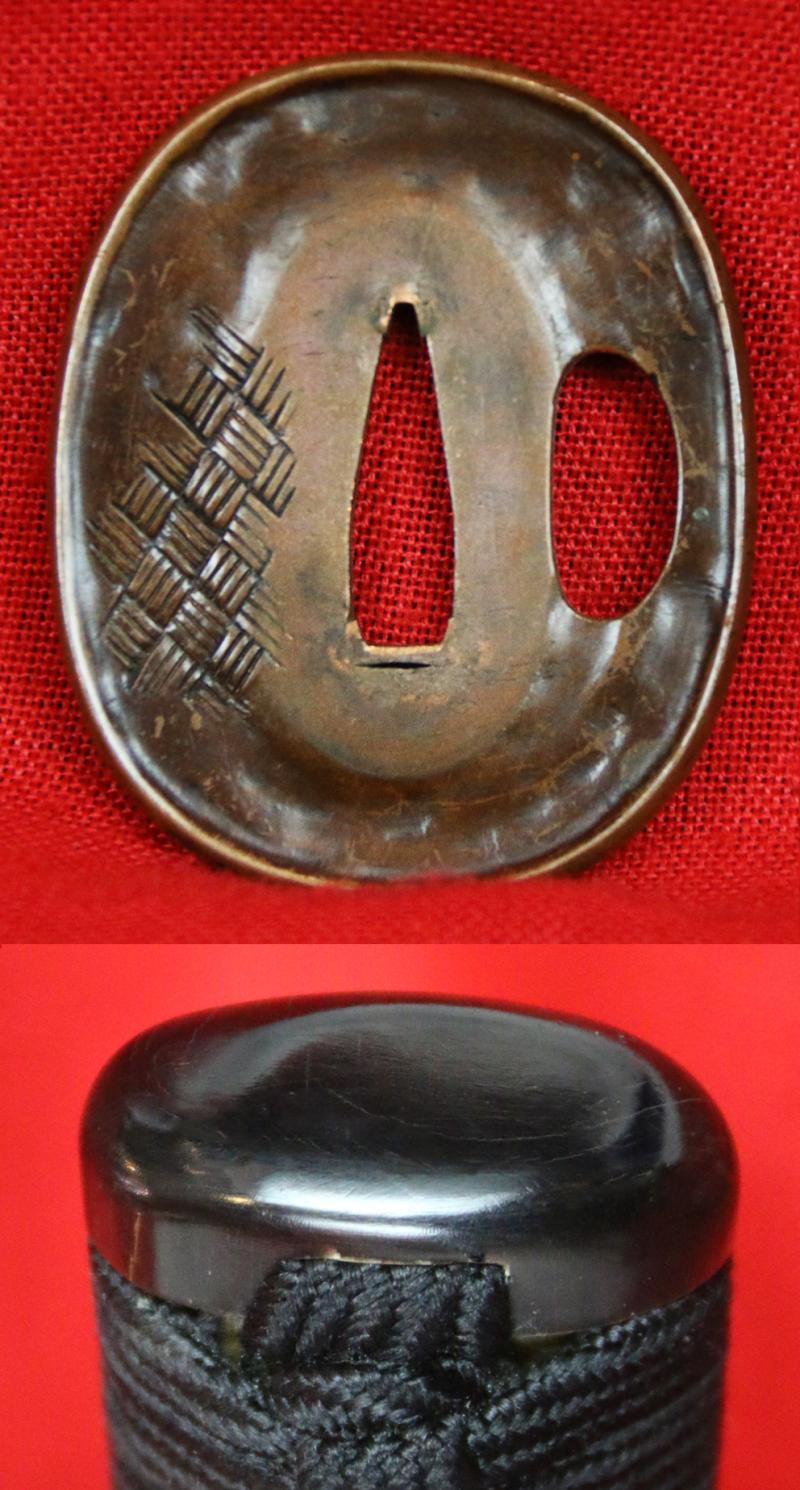A Wonderful Samurai Sword Wakazashi Circa 1600 Mounted with a Fully Matching Original Edo Suite of Kiri 桐, The Japanese Empress Tree Design Mounts of Very High Quality, In Exceptional Overall Condition
In superb untouched condition. A fabulous museum quality original samurai sword around 400 years old, with a wonderful blade with a very fine midare hamon, itame hada, original urushi lacquer saya with matching koi-guchi, uragawara and kurikata. The koshirae are patinated copper decorated with crosshatched design of a rattan screen overlaid in pawlonia flowers and leaves known as the Kiri, the empress tree. Paulownia is a symbol of good fortune, royalty, and the imperial family in Japan. It's depicted in the seal of the Prime Minister and used in various government emblems.
Samurai have been describes as "the most strictly trained human instruments of war to have existed." They were expected to be proficient in the martial arts of aikido and kendo as well as swordsmanship and archery---the traditional methods of samurai warfare---which were viewed not so much as skills but as art forms that flowed from natural forces that harmonized with nature.
An individual, in certain circumstances, apparently didn't become a full-fledged samurai until, some say, he wandered around the countryside as begging pilgrim for a couple of years to learn humility. Again this may be part of the myth. However, when all his training was completed a samurai trainee that achieved samurai status and received a salary from his daimyo, paid from taxes (usually rice) raised from the local populace, he truly became the very best at his art in the world of sword combat
Swords in Japan have long been symbols of power and honour and seen as works of art, which is exactly what they are.
In Japan the term samurai evolved over several centuries
In Japanese, they are usually referred to as bushi (武士,) or buke (武家). According to translator William Scott Wilson: "In Chinese, the character 侍 was originally a verb meaning 'to wait upon', 'accompany persons' in the upper ranks of society, and this is also true of the original term in Japanese, saburau. In both countries the terms were nominalized to mean 'those who serve in close attendance to the nobility', the Japanese term saburai being the nominal form of the verb." According to Wilson, an early reference to the word samurai appears in the Kokin Wakashū (905–914), the first imperial anthology of poems, completed in the first part of the 10th century.
Originally, the word samurai referred to anyone who served the emperor, the imperial family, or the imperial court nobility, even in a non-military capacity.It was not until the 17th century that the term gradually became a title for military servants of warrior families, so that, according to Michael Wert, "a warrior of elite stature in pre-seventeenth-century Japan would have been insulted to be called a 'samurai'".
In modern usage, bushi is often used as a synonym for samurai
Every item is accompanied with our unique, Certificate of Authenticity. Of course any certificate of authenticity, given by even the very best and highly esteemed specialist dealers, in any field, all around the world, is simply a piece of paper,…however, ours is backed up with the fact we are the largest dealers of our kind in the world, with over 100 years and four generation’s of professional trading behind us. The current two partners alone, combined together, have over 99 years of professional experience within the trade.
Code: 25749
4995.00 GBP

